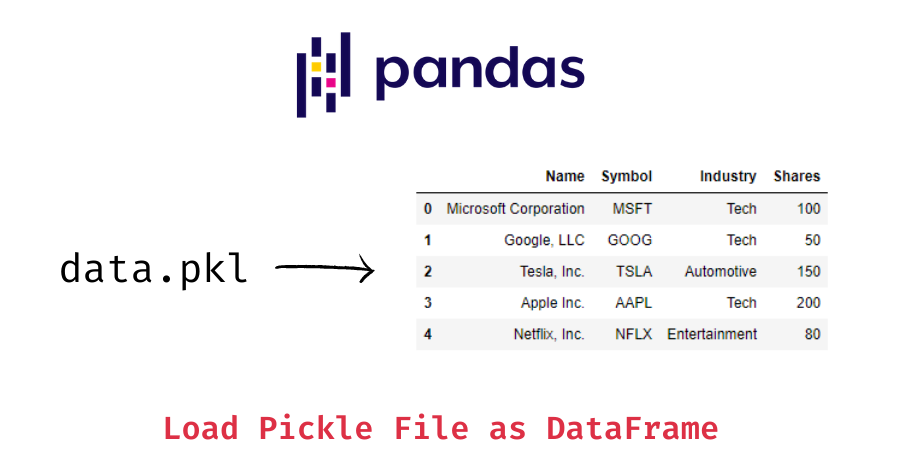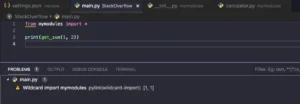Introduction
The pandas library is a powerful tool for data manipulation and analysis in Python. Among its many features, pandas provides the read_pickle() function, which allows you to load pickled objects or data from files effortlessly. In this article, we will explore the functionality and parameters of read_pickle() and understand how it can simplify the process of working with pickled data.
Overview of pandas.read_pickle()
Pickling is a way to serialize Python objects, making it convenient to store and retrieve complex data structures. Pandas read_pickle() function enables loading pickled objects, allowing you to seamlessly work with serialized data in your data analysis workflows.
Syntax and Parameters
The read_pickle() function has the following syntax
pandas.read_pickle(filepath_or_buffer, compression='infer', storage_options=None)
filepath_or_buffer: Specifies the file or file-like object from which to load the pickled data.compression: Optional parameter to handle on-the-fly decompression of on-disk data.storage_options: Optional parameter to specify additional options for storage connections.
Loading Pickled Objects
To load a pickled object using read_pickle(), provide the filepath or file-like object as the filepath_or_buffer parameter. The function automatically detects compression formats based on file extensions. You can use compression formats like ‘gz’, ‘bz2’, ‘zip’, ‘xz’, ‘zst’, ‘tar’, ‘tar.gz’, ‘tar.xz’, and ‘tar.bz2’. Here’s an example
import pandas as pd
data = pd.read_pickle('data.pickle')
Safety Considerations
It’s important to exercise caution when loading pickled objects from untrusted sources. Unpickling data from untrusted sources can pose security risks. Ensure that the pickled data is obtained from reliable and trusted sources.
Working with Storage Options
The storage_options parameter allows you to specify additional options when reading pickled data. It can be used to set options for various storage connections, such as host, port, username, password, etc. Here’s an example
import pandas as pd
storage_options = {'host': 'example.com', 'port': 1234, 'username': 'user', 'password': 'pass'}
data = pd.read_pickle('data.pickle', storage_options=storage_options)
Use Cases and Examples
Analyzing Serialized Data
Read pickled data containing preprocessed features or intermediate results for further analysis.
import pandas as pd
features = pd.read_pickle('features.pickle')
# Perform analysis on the loaded features

Model Persistence
Load a pickled machine learning model for inference or further training..
import pandas as pd
import joblib
model = joblib.load('model.pickle')
# Use the loaded model for predictions or training
Performance Considerations
When dealing with large or complex pickled objects, loading times can increase. Consider using alternative storage formats like Parquet or Feather for better performance. Additionally, optimizing the pickling process by reducing the size of the serialized objects can also improve performance.
Conclusion
In this article, we explored the functionality of pandas.read_pickle() and learned how it simplifies the process of loading pickled objects. By understanding the parameters and safety considerations, you can efficiently leverage this feature for various data processing tasks. Utilize read_pickle() to load and analyze pickled objects in your Python projects, unlocking the full potential of pandas.
References
- Pandas Documentation: [https://pandas.pydata.org/pandas-docs/stable/reference/api/pandas.read_pickle.html]
- Python pickle Module Documentation: [https://docs.python.org/3/library/pickle.html]
By understanding the capabilities and usage of read_pickle(), you can efficiently work with pickled objects and leverage the full power of pandas for data analysis and manipulation.





